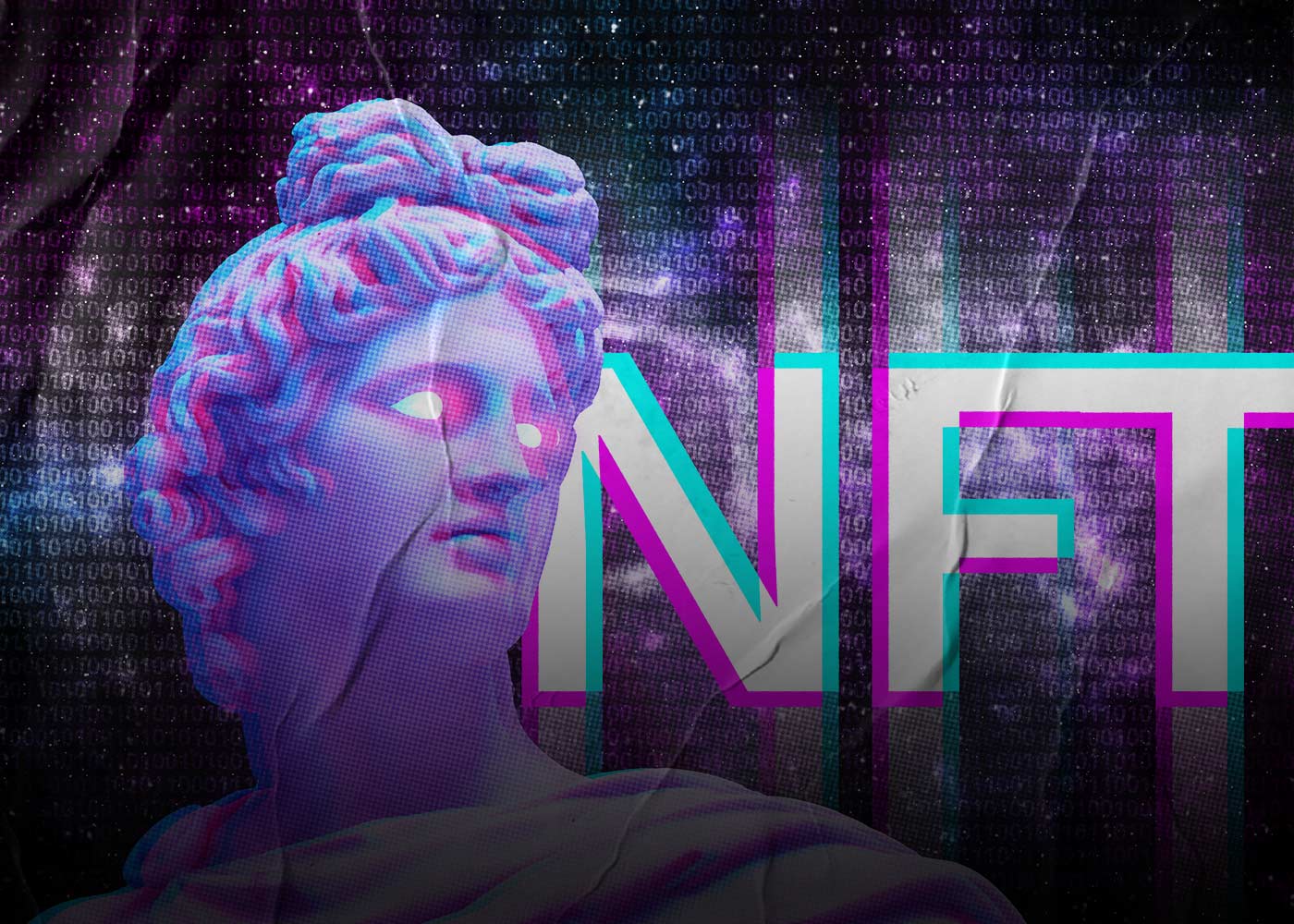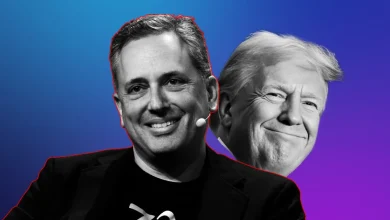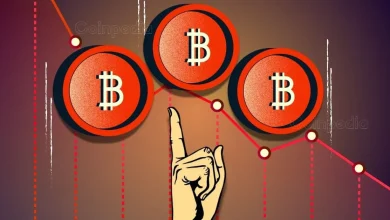
The Ethereum blockchain is undoubtedly the king of NFT. In 2021, it rapidly became the most buzzing and trafficked blockchain for Non-Fungible Tokens (NFTs). However, numerous other blockchains are mounting in popularity among crypto-artists and NFT collectors due to Ethereum’s high transaction costs and environmental impact. People have been searching for new places to mint or trade their NFT that offer lower fees and a greener alternative than Ethereum.
To provide a comprehensive understanding of the rapidly developing world of Web3 tech, we have created an overview summary of which blockchains are best for NFT. When selecting what blockchain to mint on, some vital aspects of weighing up include: network size, creator costs, consumer spending behaviors, security, and community input. This resource will help you make an informed decision.

Here Are the Top 4 Blockchains that Support NFT:
#1 – Ethereum (ETH):
Although the competition is intensifying, Ethereum remains the premier NFT blockchain. Providing a decentralized network with all of the essential financial and legal services without any intermediary involvement while hosting popular marketplaces such as OpenSea, projects like CryptoPunks and Bored Ape Yacht Club, plus artists Pak and Beeple make it clear why this platform stands out from its rivals.
Until recently, Ethereum operated on a power-hungry Proof-of-Work consensus mechanism that required an exorbitant sum of energy to run. These consensus mechanisms are what enable blockchains to be decentralized in the first place. Yet, due to PoW’s extensive electricity demands, it was necessary for cryptographic computations to validate transactions within the network.
On September 15th, 2022, Ethereum transitioned to the proof-of-stake (PoS) consensus mechanism in what is known as “The Merge.” This change resulted in an immense energy reduction of 99.5%, making it more efficient than even a traditional Web2 platform like PayPal! By utilizing PoS, we can now ensure that Ethereum will remain one of the most sustainable and reliable blockchain networks available today.
Despite some lingering doubts about the security of PoS systems as opposed to PoW, Ethereum is still seen as a reliable blockchain system, and its merger creates a way for potential advancements. The upshots? Increased safety, decentralization, and convenience—making it an obvious contender when choosing where to mint your assets.
#2 – Solana (SOL):
When Anatoly Yakovenko established Solana in 2017, the blockchain landscape had a serious issue – high costs and slow TPS speeds. Ethereum and Bitcoin could only handle about 15 transactions per second (TPS), severely limiting their usability for real-world applications. Solana promised something different – faster, more cost-effective solutions that could revolutionize how blockchains are used today.
Solidifying its position within the industry, Solana’s transaction processing speed (TPS) has now surpassed that of Visa and is on par with Mastercard. With minimal transaction fees, this blockchain network is quickly becoming a popular choice amongst crypto users and boasts one of the most rapidly growing ecosystems in existence today–with an impressive market cap of over $10 billion!
Solana is not only one of the most efficient programmable blockchains in crypto but also has a distinctive combination of proof-of-history (PoH) and proof-of-stake (PoS) protocols that render cryptographic puzzles redundant. PoH ensures that all transactions are indexed correctly by time and validated by the proper leader on the blockchain. This process accelerates validation times while minimizing transaction fees – a feature unmatched in its efficiency within this space! With Solana, users can rest assured knowing their data will be handled with care from start to finish.
Comparable to Ethereum, Solana’s Proof of Stake (PoS) system incentivizes users by allowing them to stake an amount of cryptocurrency for the chance of becoming randomly selected as a block validator. When chosen, these validators receive crypto rewards in SOL tokens. This encourages people to become stakers and provides adequate compensation when they do so. Solana’s PoS and PoH mechanisms make its transaction fees and times close to optimal, but it is not as commonly used as Ethereum. Consequently, while certain larger NFT marketplaces like Magic Eden use this blockchain technology, there are fewer trading networks and people engaging on the platform in comparison.
#3 – Tezos (XTZ):
When Kathleen and Arthur Breitman founded Tezos in 2017, they had innovation as their primary mission. Tezos is an open-source platform for assets and applications that utilizes blockchain technology to create smart contracts and decentralized apps. Its XTZ token currently ranks around 40th in terms of market cap, yet its strength lies not with dominance but rather progressiveness, especially concerning the NFT space!
Tezos stands out due to its self-amending capabilities, allowing it to continually enhance itself through a standardized protocol upgrade procedure. Furthermore, developers are encouraged and rewarded for building dApps on the platform, which makes Tezos an undisputed leader in operability. Just like Solana and Ethereum, Tezos leverages the Proof-Of-Stake consensus mechanism to downplay the computing workload needed for verifying blocks & transactions, thus minimizing transaction costs – lower than Ethereum yet higher than Solana’s fees!
On November 14, 2021, one of the earliest blockchain marketplaces – Hic et Nunc, bid farewell. If you’re aiming to mint a lot of non-fungible tokens or extensive collections, Tezos is the way to go! Right now, Objkt is the biggest and most popular marketplace on this chain.
#4 – Flow (FLOW):
Flow is a superior blockchain created for developing NFTs, games, and decentralized apps (dApps). Unlike Ethereum, which is merely a general-purpose blockchain, Flow was designed with maximum scalability in mind. This means that billions of people could have the ability to interact on the same chain with their own unique non-fungible tokens!
When they launched in 2019, Dapper Labs’ Flow skyrocketed to fame as the blockchain partner of the NBA. As a product from CryptoKitties creators, it enabled NBA Top Shot’s launch and instantly became an essential factor for driving non-fungible tokens into mainstream acceptance.
Just like Tezos, Flow also utilizes a solely PoS consensus mechanism to validate transactions. This makes the blockchain able to handle more TPS than Ethereum, with developers claiming that it can “sustainably maintain over 100 TPS” without disclosing an exact number.
In addition to Blocktobay (a Flow-based NFT marketplace), you can trade your Flow NFTs on OpenSea, Rarible, Foundation, and many other platforms. Since the arrival of sporting organizations such as the NBA, NFL, and UFC, who have unveiled their own marketplaces powered by blockchain technology -Flow has become a well-known outlet for trading sports-related Non-Fungible Tokens. However, unlike Solana, which saw more widespread use early on, fewer people are currently utilizing Flow due to its lesser popularity -resulting in fewer available marketspaces that support its tokens.
#5 – Worldwide Asset Exchange (WAX):
As news of historic NFT sales and popular collections on Ethereum, Tezos, and Solana made a splash in the media recently, the Worldwide Asset Exchange (WAX) has quickly become renowned as a hub for Web3 gaming. With its vast selection of digital collectibles and virtual items, WAX is now the network of choice for many gamers around the world.
Established in 2017 by two of the most preeminent cryptocurrency pioneers, William Quigley and Jonathan Yantis, WAX is situated in the Cayman Islands with a mission to create global accessibility. Thousands of dApps and NFT marketplaces are now accessible on WAX for its users’ convenience. The platform also has some of the best blockchain games available, including Alien Worlds, Farmer’s World, and Prospectors – all from the play-to-earn sector! With such standout projects running on this chain, it comes as no surprise that WAX has become one of today’s go-to platforms for digital asset trading.
As a part of its dedication to sustainability, Wax adopts the PoS mechanism as other high-functioning blockchains do and produces carbon offset NFTs in collaboration with Climate Care. Additionally, WAX offers incredibly low transaction fees for their users, which are then redistributed back into the WAX community as an incentive. Moreover, this network is home to many popular brands such as Topps baseball cards collecting company, NASCAR racing brand Hot Wheels toys, and even cult classics like Godzilla or Spiderman!
#6 – Binance Chain (BNB):
In February 2022, Binance Smart Chain and Binance Chain joined forces to create a unified network under the banner of “BNB Chain” in an effort to boost innovation, decentralize operations and build towards pioneering advancements.
BNB Chain is a highly centralized chain, with many of its Proof-of-Stake validators being directly connected to the renowned Binance Crypto Exchange. This setup provides an optimal equilibrium between low fees and rapid transactions for users. PoSA consensus model allows for shorter block times as well as minimal transaction costs – two major advantages that are integral to providing exceptional user experience. The transaction validators take turns creating blocks, with 21 of them required to operate the exchange. These are replaced every 24 hours. Supposedly, 11 out of these 21 have connections directly related to the Binance Crypto Exchange and manage most of the Binance Chain’s operations.
Despite the centralized nature of Binance Smart Chain that may not sit well with certain members of the crypto and NFT space (most notably, its recent collision with a $100-million hack), numerous popular marketplaces have begun to take off on this blockchain platform — such as Element, Mobox, and PancakeSwap. That being said, it still has a ways to go before reaching the same level of robustness found in Ethereum’s ecosystem.






